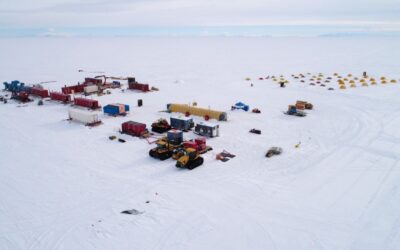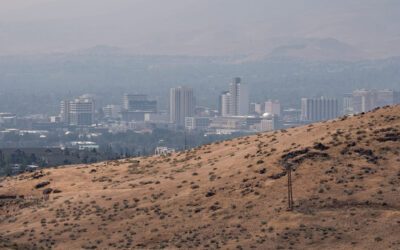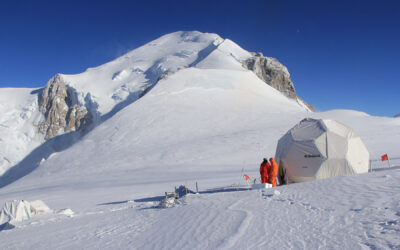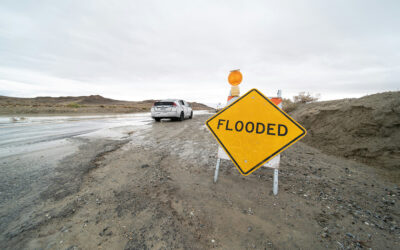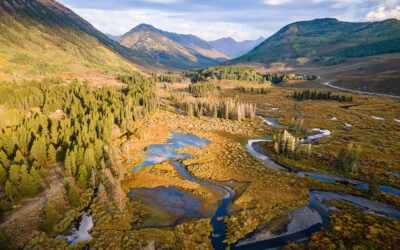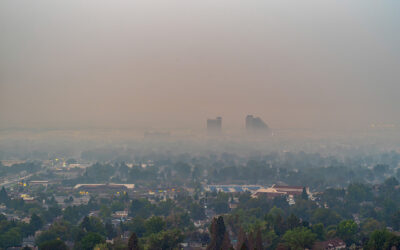News & Announcements
Working to Solve our Most Challenging Environmental Problems
DRI’s research calls on the expertise and methods of scientists from multiple scientific disciplines. More than 600 highly-skilled scientists, engineers, technicians, students, and staff work collaboratively within and across three research divisions, focused on understanding and answering critical science questions about global climate change, water quality and availability, air quality, the sustainability of desert lands, life in extreme environments, education, and more.
DRI Internships Offer TMCC Students Insight Into Science Careers
This summer, DRI brought eighteen students from Truckee Meadows Community College (TMCC) to our Reno campus for a paid, immersive research experience. Over the course of the ten week program, students worked under the mentorship of DRI faculty members to learn about the process of using scientific research to solve real-world problems. This unique internship program welcomes all students, not only those pursuing majors in science.
Hidden Life Beneath Antarctic Ice: Microbial Diversity and Survival Strategies Revealed in Mercer Subglacial Lake
Hundreds of lakes exist beneath the Antarctic ice sheet, and very few have ever been explored by scientists. Now, an international research team has published their findings from an ambitious effort to drill over 1,000 meters into the ice to sample the life hidden in one known as Mercer Subglacial Lake. The project, referred to as the Subglacial Antarctic Lake Scientific Access (SALSA) project, was documented in detail for the film The Lake at the Bottom of the World.
DRI Contributes to Study Using AI in Wastewater Surveillance for Detection of Emerging Virus Pathogens
DRI Microbiologist Duane Moser co-authored a new study which introduces an AI-driven approach for the rapid detection and characterization of emerging variants during wastewater surveillance. The research builds on his earlier work helping to establish wastewater monitoring as a cost-effective tool for tracking pathogens during the COVID-19 pandemic.
DRI Recruiting Washoe County Community Members for Research on the Health Impacts of Heat and Wildfire Smoke
DRI and Northern Nevada Public Health are recruiting Washoe County community members for a research project examining heat and air quality impacts on household health. Participants should be 18 or older and live in Washoe County.
Scientists Find the First Ice Core From the European Alps That Dates Back to the Last Ice Age
The new study, published in the June issue of PNAS Nexus, examines a 40-meter long ice core from Mont Blanc’s Dôme du Goûter. Using radiocarbon dating techniques, the research team found that the glacier provides an intact record of aerosols and climate dating back at least 12,000 years. Aerosols are small droplets and particles in the air such as desert dust, sea salts, sulfur from volcanic eruptions, soot from forest fires, as well as pollutants and other emissions from human activities.
A New, Detailed Analysis of the Benefits and Trade-offs of Urban Street Trees in Las Vegas
Earth is hotter than it has been in 125,000 years, scientists say, and Las Vegas continues to break temperature records. Planting and preserving the city’s street trees is one method that brings many benefits, from the cool air of their shade to their ability to store carbon. Now, a new study takes a deeper look at just how much trees can offer Sin City, as well as the water tradeoffs inherent in growing trees in a desert.
Desert Lichen Offers New Evidence for the Possibility of Life on Other Planets
The question of whether Earth is alone in harboring life has captivated humanity for millennia. In recent years, scientists have turned to Earth-like planets in other solar systems that may show the most promise, but many revolve around stars that emit much stronger solar radiation than our own. Now, a new study offers evidence that life as we know it may be able to thrive on those Earth-like exoplanets.
Wet Soils Increase Flooding During Atmospheric River Storms
A new study examined decades of atmospheric river storms across the West Coast to pinpoint the conditions that lead to catastrophic flooding. The research, published June 4 in the Journal of Hydrometeorology, analyzed more than 43,000 atmospheric river storms across 122 watersheds on the West Coast between 1980 and 2023.
New Study Offers Detailed Look at Winter Flooding in California’s Central Valley
The research used satellite imagery to identify where winter flooding occurs, which can improve flood risk awareness and inform how to best redirect floodwaters to replenish groundwater supplies.
Spring Runoff is Older Than You Think
DRI’s Rosemary Carroll, Research Professor of Hydrology, co-authored a new study that found spring runoff in mountains across the Western U.S. is much older than previously known. Using advanced dating techniques, the research discovered that melting mountain snowpacks first replenish groundwater reserves before filling springs several years later. This means that the water relied on by communities across the West takes over five years from snowflake to streamflow. The research has implications for water management and our understanding of the changing dynamics of water availability.
New Study Analyzes Air Quality Impacts of Wildfire Smoke
The comprehensive research examined air quality in Reno, Nevada during 106 wildfires to illuminate the atmospheric and public health impacts of smoke. The research, published in April’s issue of Environmental Science: Atmospheres, measured air quality in Reno, Nevada over a 19 month period between 2017 and 2020 to capture both smoky and clear days.
Graduate Student Winners of the Annual Poster Presentation Session
On Friday, April 25th, 21 graduate students presented their research at DRI’s Reno campus for the annual poster presentation session. Organized by Kathleen Rodrigues, PhD, Assistant Research Professor of Luminescence, the poster session offers an opportunity for DRI-affiliated graduate students to network with each other and with DRI faculty, hone their presentation skills, and showcase the research they’re working on in pursuit of their degrees.

